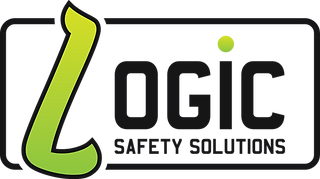
With our event tour safety management service, we are able to assist production managers and promoters from all over the UK and Europe. We can help your tour navigate the safety requirements in all territories you are due to visit and help you to produce:
- Tour Risk Assessments
- Tour method statements
- Crew safety handbook
- Specific local venue requirement documentation
- Collated vendor safety documents
FAQs on Tour Safety Management
A tour risk assessment is a systematic process by which potential hazards associated with a particular tour or excursion are identified, evaluated, and controlled. This involves examining all aspects of the tour, including transportation, accommodation, activities, and any specific sites that will be visited. The primary objective is to ensure the safety and well-being of all participants.
In the context of UK health and safety regulations, conducting a tour risk assessment is not just a best practice—it’s a legal requirement under the Health and Safety at Work Act 1974 and the Management of Health and Safety at Work Regulations 1999. Failure to undertake a proper risk assessment can lead to legal consequences, financial penalties, and damage to a company’s reputation. Moreover, a well-conducted risk assessment can help tour operators pre-emptively address potential issues, thereby enhancing the overall tour experience for participants.
The benefits of conducting tour risk assessments are manifold, both from a safety perspective and a business standpoint. Here are some of the key advantages:
Safety First: The primary benefit is ensuring the safety and well-being of all participants. By identifying and mitigating potential risks in advance, tour operators can prevent accidents and injuries, ensuring a positive experience for everyone involved.
Legal Compliance: As mentioned, UK legislation requires businesses, including tour operators, to carry out risk assessments. By doing so, businesses stay compliant and avoid potential legal repercussions.
Enhanced Reputation: Companies that prioritize safety and conduct thorough risk assessments are more likely to be perceived as trustworthy and reliable by customers. This can lead to increased bookings and customer loyalty.
Cost Savings: Preventing accidents through proper risk assessment can save companies substantial costs in terms of potential legal fees, medical expenses, and compensation payouts.
Informed Decision Making: A tour risk assessment provides valuable insights into the feasibility and logistics of a particular tour or activity. This information can guide tour operators in making informed decisions about the itinerary, vendors, and other critical aspects.
Increased Confidence: When staff and tour participants know that risks have been thoroughly assessed and managed, it boosts their confidence and allows everyone to enjoy the experience with peace of mind.
In essence, a tour risk assessment is not just a procedural necessity but a vital tool that benefits businesses, staff, and participants alike.
Tour Method Statement (TMS) is a systematic documentation that outlines the method of carrying out specific tasks or activities during a site visit, tour, or inspection. It’s often used in industries where there are significant health and safety risks to ensure that all activities are undertaken safely and efficiently. In the context of a UK-based health and safety company, the Tour Method Statement is an essential tool for risk management.
Benefits of a Tour Method Statement:
1. Safety Assurance: By defining a clear methodology for the tour, TMS ensures that all potential risks are identified and addressed beforehand, providing safety for both the workers and the visitors.
2. Compliance: Adhering to a TMS ensures that the company is following all relevant health and safety regulations and standards in the UK, thus avoiding potential legal ramifications.
3. Efficiency: With a clearly laid out plan, the tours or inspections are conducted in a streamlined manner, saving time and resources.
4. Clarity and Consistency: Every team member or visitor is aware of their roles and responsibilities, leading to consistent practices every time a tour is conducted.
5. Training Tool: New employees or visitors can be quickly familiarised with the procedure, using the TMS as a reference, ensuring everyone is on the same page regarding safety protocols.
6. Accountability: Should any incident occur, the TMS acts as a reference, highlighting if procedures were followed correctly or if deviations occurred, making it easier to pinpoint areas of improvement.
By integrating a Tour Method Statement into regular practices, UK health and safety companies can ensure not only compliance with regulations but also the well-being of all individuals involved.

